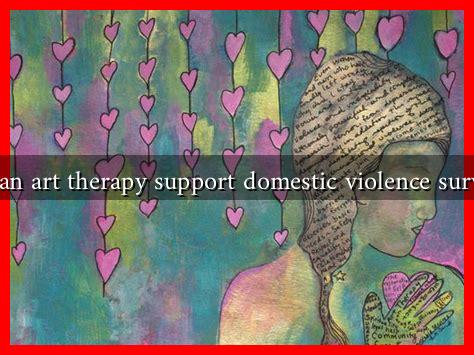-
Table of Contents
How Can Art Therapy Support Domestic Violence Survivors?
Domestic violence is a pervasive issue that affects millions of individuals worldwide, leaving deep emotional and psychological scars. Survivors often struggle with feelings of shame, isolation, and trauma, making traditional therapeutic approaches challenging. Art therapy has emerged as a powerful tool to help these individuals express their emotions, process their experiences, and begin the healing journey. This article explores how art therapy can support domestic violence survivors, highlighting its benefits, techniques, and real-world applications.
The Power of Art Therapy
Art therapy combines the creative process of making art with psychological theory and practice. It provides a safe space for individuals to express their feelings and thoughts without the constraints of verbal communication. For domestic violence survivors, this can be particularly beneficial for several reasons:
- Non-verbal Expression: Survivors may find it difficult to articulate their experiences verbally. Art allows them to express complex emotions and trauma in a non-threatening way.
- Empowerment: Creating art can foster a sense of control and empowerment, helping survivors reclaim their identity and agency.
- Safe Space: Art therapy sessions provide a safe environment where survivors can explore their feelings without judgment.
- Community Building: Group art therapy can help survivors connect with others who have similar experiences, reducing feelings of isolation.
Techniques Used in Art Therapy
Art therapists employ various techniques tailored to the needs of domestic violence survivors. Some common methods include:
- Drawing and Painting: Survivors can create visual representations of their feelings, experiences, or hopes for the future.
- Collage Making: This technique allows individuals to piece together images and words that resonate with their experiences, facilitating self-discovery.
- Clay Modeling: Working with clay can be a tactile way to express emotions and create something tangible, which can be particularly therapeutic.
- Storytelling through Art: Survivors can create narratives through their artwork, helping them process their trauma and envision a path forward.
Case Studies and Success Stories
Numerous case studies illustrate the effectiveness of art therapy for domestic violence survivors. For instance, a study published in the Journal of Trauma & Dissociation found that participants who engaged in art therapy reported significant reductions in symptoms of PTSD and anxiety. One survivor, who had experienced years of abuse, described how creating a mural helped her visualize her journey from victimhood to empowerment. This process not only facilitated healing but also fostered a sense of community among participants.
Another example comes from a community-based program in New York City, where art therapy was integrated into support services for domestic violence survivors. Participants engaged in weekly art sessions, leading to improved self-esteem and emotional regulation. Many reported feeling more connected to their emotions and better equipped to cope with their experiences.
Statistics Highlighting the Need for Support
The need for effective support systems for domestic violence survivors is underscored by alarming statistics:
- According to the World Health Organization, approximately 1 in 3 women worldwide have experienced physical or sexual violence in their lifetime.
- The National Coalition Against Domestic Violence reports that nearly 20 people per minute are physically abused by an intimate partner in the United States.
- Survivors of domestic violence are at a higher risk for mental health issues, including depression, anxiety, and PTSD.
Conclusion
Art therapy offers a unique and effective approach to supporting domestic violence survivors. By providing a safe space for expression, fostering empowerment, and facilitating community connections, art therapy can play a crucial role in the healing process. As awareness of the benefits of art therapy continues to grow, it is essential for support services to integrate these creative approaches into their programs. For survivors seeking healing, art therapy can be a transformative journey toward reclaiming their lives and identities.
For more information on art therapy and its benefits, consider visiting the American Art Therapy Association.

